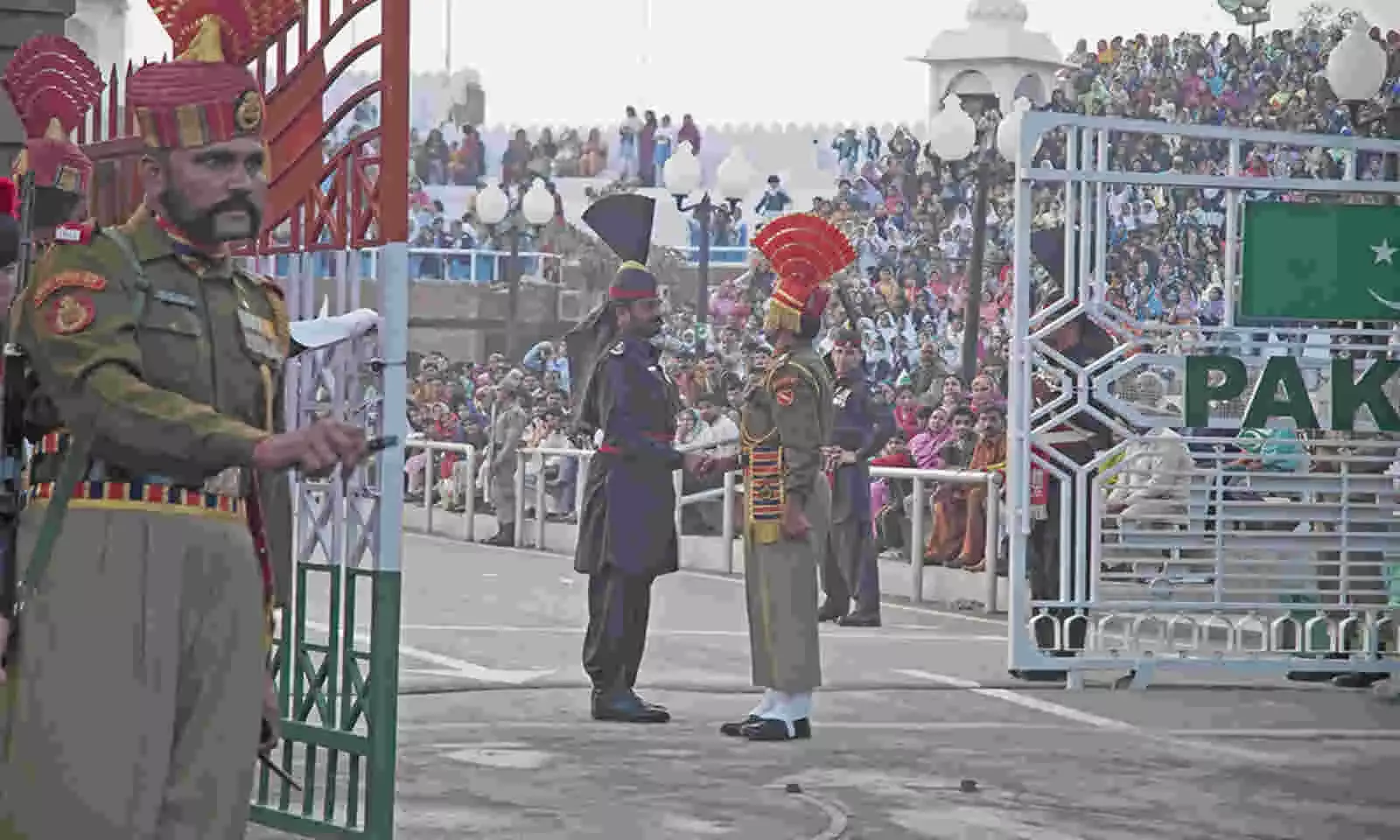Ceasefire Violations Have Increased 14 Times In The Current NDA Rule
There were over 3,800 ceasefire violation cases along the LoC in 2020 making it the highest in nearly 18 years.

A recent tweet on INC's twitter page, claimed that there were zero ceasefire violation (CFV) cases by security forces along the borders of Jammu and Kashmir during the year 2004 and 2005. The infographic further mentions 5,100 ceasefire violations in the year 2020 -- claiming it to be the highest in nearly eighteen years.
The former claim is false. According to a Rajya Sabha response there were four cases of firing across the Line of Control (LoC) between the months of November 2004 and February 2005. The following years saw a continuous rise in the number of ceasefire violations; there were more than 700 ceasefire violations during the UPA regime until May 2014. Since then, violations have shot up fourteen times in the current NDA rule, with over 10,900 ceasefire violations-- according to a FactChecker analysis.
Although the congress claims that there were 5,100 ceasefire violations in the year 2020, there is no official release or document to support this number. However, there were over 3,800 ceasefire violation cases along the LoC in 2020 making it the highest in nearly 18 years, since the ceasefire agreement (CFA) came into effect in 2003, according to a virtual weekly media briefing by the Ministry of External Affairs on October 23, 2020.
Ceasefire Agreement (CFA) 2003
On November 26, 2003, the Atal Bihari Vajpayee government entered into a ceasefire agreement with Pakistan by merely releasing a statement through the foreign ministry. "The Ceasefire Agreement of 2003 is not a clearly written agreement -- the existing understanding of the agreement is only a verbal one, communicated through a phone call," Happymon Jacob, associate professor of diplomacy and disarmament studies, Jawaharlal Nehru University (JNU), New Delhi, told FactChecker. "It was actually a reiteration of the December 1972 ceasefire agreement -- at the end of the war." Jacob said. Unlike previous formal agreements of 1949 (Karachi Agreement), 1965 (Tashkent Declaration) and 1972 (Simla Agreement), the ceasefire agreement of 2003 has not yet been formalized despite efforts from Pakistan's side.
Reasons for surge in ceasefire violations along the LoC
Ceasefire violations have spiralled upwards particularly post the surgical strikes of 2016. There were 449 ceasefire violations along the Indo-Pakistan border in the year 2016, 971 in 2017, 1,432 in 2018 and 3,289 in 2019. " The extent of firing on the LoC reflects the state of relationship between the two countries to a great extent." said Jacob of JNU.
"Ceasefire violations have become even more regular and deadly since August 2019 when the government of India decided to carry out major constitutional changes vis-à-vis Jammu and Kashmir, a decision Pakistan has been deeply unhappy about," he said. Pakistan has since upped the ante by resorting to increased firing on the LoC, aiding the infiltration of terror elements into Kashmir, among other things, he added.
Since the second term of the NDA government's rule, India reported 2,335 incidents of ceasefire violations in the first eight months alone. By September 7, 2020, there were 3,186 incidents of ceasefire violations. As of October, 2020 there have been more than 3,800 violations.
What triggers a ceasefire violation?
There are a number of factors that could trigger ceasefire violations. Political factors such as unfriendly relationships between the two states, or unrest in Kashmir often lead to an increase in ceasefire violations, said Jacob.
"A lack of clarity of the LoC sometimes leads to firing as does the presence of aggressive commanders on either side," he said. "There is no mutually agreed upon system of counting the ceasefire violations. But in general, a period of 24 hours from the first shot fired is taken to count one ceasefire violation in an area. For instance, in a particular area, if the firing starts at 6 am, then all the firings till 6 am the next day are counted as one ceasefire violation. Sometimes there could be tens of thousands of shots fired by the other side in those 24 hours," he explained.
Measures to limit ceasefire violations
There should be a formalized written agreement between India and Pakistan clearly explaining the norms and guidelines to manage the border, Jacob said. He also stressed that the Director General of Military Operations (DGMOs) of the two armed forces meet annually to create stability on the LoC. "A large number of military confidence-building measures (CBMs) pertaining to the LoC could be finalised to reduce the violence on the LoC," he added.


